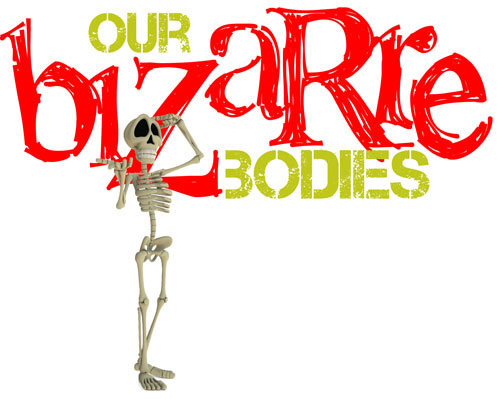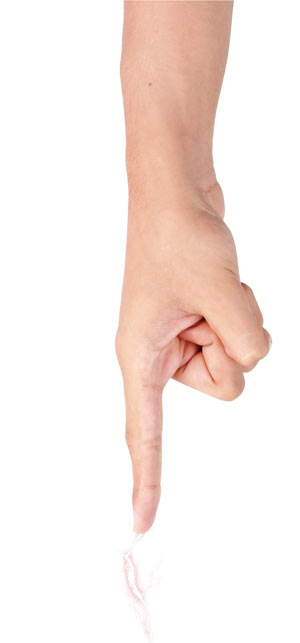
We thought it would be fun to take a look at some of the human body’s biggest mysteries. Who knows? You just might learn a thing or two about why your own body acts the way it does.
Why do we snap, crackle & pop?
Ever known someone (or maybe you are that someone) who pops and cracks with every movement? Hard to believe it’s gas making that sound. No, not that kind of gas. Scientists explain that synovial fluid is present in our joints to aid in lubrication. Inside this fluid, carbon dioxide, nitrogen and oxygen build up. When we separate these joints, the gas is rapidly released, making a noise. Another reason? When a joint moves, the tendons move slightly out of place (particularly in our ankles and knees). That common pop you hear when you get up is the sound of the tendon snapping back into place. By the way, you won’t be able to pop that same joint again until the gas has had a chance to build up once more.
Source: Library of Congress
What causes a “charley horse”cramp?
If the mere mention of a “charley horse” makes you cringe, read on at your own risk. These powerful spasms can occur in any muscle of the body, but are most common in the calf muscle. During the involuntary spasms, the muscle doesn’t relax—hence the “knot-like” feeling the cramp leaves in its wake. It’s believed that the most common reasons for these cramps is lack of hydration, overuse of the muscles, wearing high heels or taking certain medications. Even pointing the toes sharply or overstretching your muscle (particularly while sleeping) can lead to a charley horse. If you find yourself experiencing these spasms on a regular basis, try upping the potassium and calcium in your diet. Also, skip the soda and grab a bottle of water.
Sources: National Library of Medicine, National Institutes of Health
What happens when we sneeze?
And now for the “grossology” part of a sneeze. Occurring over 2–3 seconds, a sneeze can spew as many as 2,000–5,000 germ-filled droplets into the air. Can you say yuck? And it all happens at an amazing 70–100 miles per hour. Before we leave this topic—no, your heart doesn’t skip a beat when you sneeze. Did you know some people say “bless you” following a sneeze because they believe a sneeze could cause your soul to escape your body? Who are these people?
Source: washingtonpost.com
Why do boogers form?
As icky as it might be, mucus does play an important role in protecting your body. As we breathe through our noses, lots of germs and fine particles make their way through our nostrils. In an effort to keep said germs from making a beeline to your lungs, your body forms snot—a sticky, slippery substance—to trap much of it. OK, so now that the dirt and germs are all trapped, our nose hairs (and yes, we all have nose hairs, and some need a good trim every now and then) move the trapped particles toward the front of the nose. As it moves along, it rolls, forming into a ball. When all of those elements lump together and exit your nose, voila, you have a booger! Oh and if your little one seems to have acquired a taste for boogers, no harm done (other than a little public embarrassment). Dr. Friedrich Bischinger, an Innsbruck, Austria-based lung specialist says, “With the finger you can get to places you just can’t reach with a handkerchief, keeping your nose far cleaner. And eating the dry remains of what you pull out is a great way of strengthening the body’s immune system. Medically it makes great sense and is a perfectly natural thing to do.”
Source: Associated Content

Are yawns contagious?
Chances are you’ll yawn once or twice before you’re done reading this paragraph. Ahh, the power of suggestion. It appears that seeing, hearing or thinking about yawning can trigger an actual yawn. Some evidence suggests that yawning is a means of communicating changing environmental or internal body conditions to others. If so, then its contagious nature is most likely a means of communication within groups of animals, possibly as a means to synchronize behavior. If this is the case, yawning in humans appears to have lost its significance over time.
Sources: scientificamerican.com, msnbc.com
What causes goose bumps?
Think of a goose bump as a tiny elevation of the skin, caused by a contraction of an even tinier muscle. These muscles are attached to each hair follicle on your body and are also what cause the little hairs on your arms and neck to stand on end. Some theories suggest that goose bumps may be proof that smooth-skinned humans evolved from much hairier humans. When apes, dogs or other animals are scared, their fur bristles, making them look larger. Might be useful for animals, but not so much for us (well, unless you’re Robin Williams).
Source: scientificamerican.com

Why do we get shocked on dry, cold days?
If you hesitate before touching something metal, you’re not alone. So what gives with the shock? Well, it all comes down to chemistry—not my favorite subject so I’ll keep this brief. It all starts with an itty bitty atom. They make up every single thing on the planet. Most of the time, atoms have the same number of protons (positively charged particles) and electrons (negatively charged particles). Sometimes, however, the charges aren’t balanced, thus creating static electricity. For example, when you shuffle your feet on a rug, you pick up extra electrons, giving yourself a negative charge. Electrons move more easily through certain materials like metal, aka conductors. When you touch something metal, which has a positive charge with few electrons, the extra electrons jump from you to that surface. That tiny shock you feel is the fast movement of electrons. By the way, static electricity occurs more during the cold season because the air is drier, allowing for an easier build up of electrons on the skin’s surface. Get it? Me neither. Let’s move on.
Source: kidshealth.org
What is a hiccup?
You drank your soda too fast, or you were startled. Bam, you’re hiccupping. What’s up with these annoying little spasms? Most people hiccup four to 60 times per minute during a bout of hiccups, and everyone has a specific, lifelong hiccup pattern. So what exactly is happening? I feel a science lesson coming on. According to Discovery Health, during normal breathing, we take in air from the mouth and nose, and it flows through the pharynx, past the glottis and into the larynx and trachea, eventually ending in the lungs. (Got all that?) The diaphragm aids this airflow and moves down when we inhale and up when we exhale. Any irritation to the nerves that control this movement causes a spasm of the diaphragm. This spasm results in us taking a short, quick breath that is interrupted by the closing of the epiglottis (a flap that protects the glottis, the space between the vocal cords). The sudden closing creates the sound we all know as a hiccup.
Source: Discovery Health

Why does it hurt to hit our “funny” bone?
Giving your “funny bone” a good whack is one of those things that can send shivers down your spine. Sometimes it hurts. Sometimes it tingles. Either way, it’s not funny. First things first, your funny bone isn’t actually a bone at all. Along the inside part of your elbow is the ulnar nerve. When that nerve gets shuffled and bumps against your humerus, the long bone between your elbow and shoulder, (maybe that’s where the funny comes in!) it causes the nerve to react, sending an awkward sensation through your arm and into your fingers.
Source: kidshealth.org
Why can’t we tickle ourselves?
There’s a very good explanation for this. When you try to tickle yourself, your brain will anticipate the contact from your hands and prepare itself for it. The predictability of the stimulus, coupled with the fact that our brain “knows” what our hands are doing, make tickling ourselves difficult. On the other hand, when somebody else grabs your sides to tickle you, whether expected or not, your brain sees it as a foreign sensation and reacts appropriately—usually with peals of laughter.
Sources: Discovery Health, National Institute of Health






